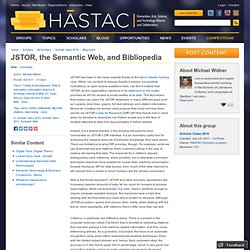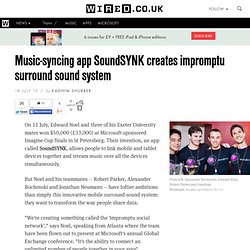

hector llanquin
<>_<>
Picasa Mobile. JSTOR, the Semantic Web, and Bibliopedia. JSTOR has been in the news recently thanks to the Aaron Swartz hacking case.

While I do not wish to discuss Swartz’s actions, his possible motivations, or open access questions here, I do find it notable that JSTOR, as the organization mentions in its statement on the matter, provides an API for access to broad swaths of its data. This fact means that coders can query the JSTOR databases in many different ways such as n-grams, time lines, graphs, full text retrieval, and citation information. Moreover, it makes me wonder what purpose that could not have been served via JSTOR’s Data for Research (DfR) API that Swartz had in mind when he decided to download (via Python scripts and in the face of multiple attempts to stop him) approximately 4 million articles.
Music-syncing app SoundSYNK creates impromptu surround sound system. On 11 July, Edward Noel and three of his Exeter University mates won $50,000 (£33,000) at Microsoft-sponsored Imagine Cup finals in St Petersberg.

Their invention, an app called SoundSYNK, allows people to link mobile and tablet devices together and stream music over all the devices simultaneously. But Noel and his teammates -- Robert Parker, Alexander Bochenski and Jonathan Neumann -- have loftier ambitions than simply this innovative mobile surround sound system: they want to transform the way people share data. "We're creating something called the 'impromptu social network'," says Noel, speaking from Atlanta where the team have been flown out to present at Microsoft's annual Global Exchange conference.
"It's the ability to connect an unlimited number of people together in your area". Imagine that you're listening to a band at a festival. Dynamical Systems (Including Chaos) Native American Symbols ***